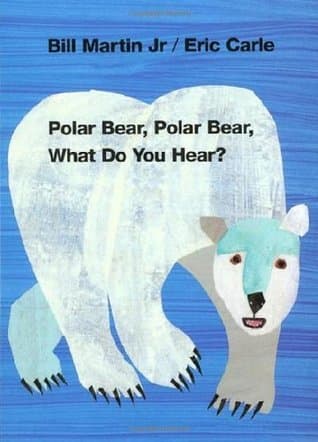
Book Review Summary: Polar Bear, Polar Bear, What Do You Hear? (Brown Bear and Friends)
Introduction
"Polar Bear, Polar Bear, What Do You Hear?" by Bill Martin Jr. and Eric Carle is a delightful children's book that takes readers on a journey through the zoo, exploring the sounds made by various animals. With its catchy rhythmic words and engaging illustrations, this book has captured the hearts of young readers and parents alike. In this article, we will delve into the author's background, analyze the views of readers, and discuss the reasons why this book stands out among others.
About Bill Martin Jr.
Bill Martin Jr., the author of "Polar Bear, Polar Bear, What Do You Hear?", was an elementary school principal, teacher, writer, and poet. He had a deep understanding of children's education and created more than 300 books that have become beloved classics. Martin's ability to speak directly to children shines through in his writing, making his books both entertaining and educational. His contributions to the world of children's literature have left a lasting impact.
Analysis of Views
- Engaging rhythmic words: Readers appreciate the rhythmic nature of the book, which encourages children to chant along and participate in the story. The repetition of the title phrase adds to the fun and creates a memorable experience for young readers.
- Creative illustrations: Eric Carle's artwork in "Polar Bear, Polar Bear, What Do You Hear?" is widely praised for its beauty and creativity. The vibrant colors and unique designs of the animals make the book visually appealing and enhance the overall reading experience.
- Engaging read-aloud: Parents and caregivers enjoy reading this book aloud to their children, as it encourages active participation and creates a fun atmosphere. The repetition and rhythm make it easy to read aloud multiple times without losing interest.
- Educational value: Many readers appreciate the opportunity to introduce children to different animals and their sounds. The book provides an excellent platform for discussing animal habitats, sounds, and characteristics, making it a valuable educational tool.
- Interactive nature: The book's interactive elements, such as children imitating animal sounds and guessing the next animal based on its sound, add to its appeal. It engages young readers in a playful way and helps them develop their listening skills.
Reasons for Recommendation
- Rhythmic and repetitive text: The book's rhythmic and repetitive nature makes it easy for young children to follow along and participate in the story. This repetition helps reinforce learning and aids in language development.
- Engaging illustrations: Eric Carle's captivating illustrations bring the animals to life and enhance the storytelling experience. Children are drawn to the vibrant colors and unique designs, making it visually appealing and enjoyable to read.
- Educational value: "Polar Bear, Polar Bear, What Do You Hear?" provides an opportunity to introduce children to different animals and their sounds. The book can be used as a tool for teaching about animal habitats, sounds, and characteristics, making it a valuable educational resource.
Reasons for Not Recommendation
- Limited plot: Some readers find the plot of the book somewhat limited compared to other children's books. While the focus on animal sounds is engaging, some may prefer more complex storylines or deeper themes.
- Unfamiliarity with animal sounds: For readers unfamiliar with the sounds made by certain animals, pronunciation may pose a challenge. However, this can also be seen as an opportunity for parents or caregivers to educate their children about animal noises and sounds.
Conclusion
"Polar Bear, Polar Bear, What Do You Hear?" by Bill Martin Jr. and Eric Carle is a delightful children's book that combines engaging rhythmic words with captivating illustrations to create a memorable reading experience for young readers. With its focus on animal sounds and interactive elements, this book offers educational value while keeping children engaged and entertained. While some readers may find the plot limited or unfamiliarity with animal sounds a challenge, overall this book stands out as a recommended read for parents and educators looking for a fun and educational book for young children.